Key in a search term below to search our website.
Key in a search term below to search our website.
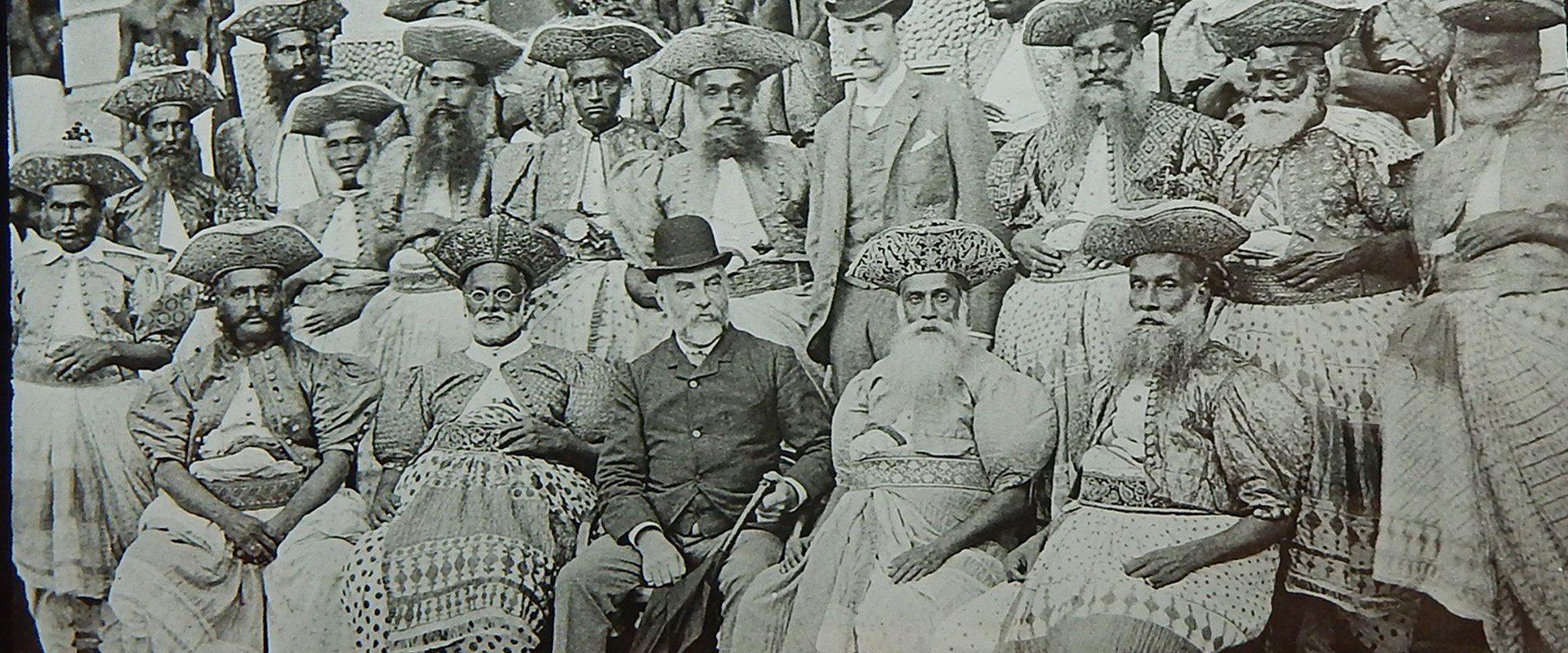
Between 1925 and 1935 a large collection of fascinating objects and glass lantern slides were donated to the Museum by Sir Everard (1852-1932) and Lady Hannah (1854–1947) im Thurn. This collection was amassed during Everard's long career over thirty years in the colonial service, including posts in Guyana (formerly known as British Guiana), Sri Lanka (formerly known as Ceylon) and Fiji. In 1920 the couple moved to Prestopans, East Lothian, due to Everard's ill health and existing family connections they both had with Scotland.
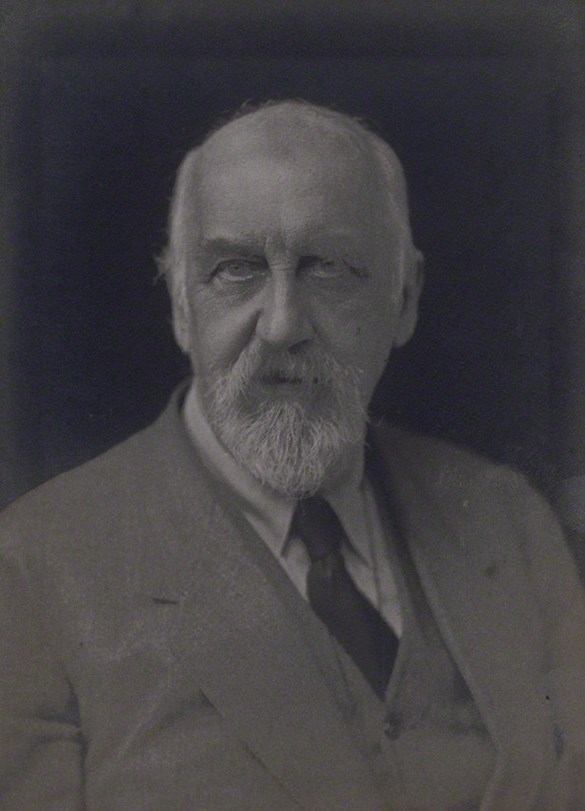
Above: Sir Everard Ferdinand im Thurn, by Walter Stoneman, bromide print, 1918 © National Portrait Gallery, London.
The im Thurn's collection at National Museums Scotland is comprised of around 250 objects and 500 glass lantern slides. Around 100 objects are pottery fragments excavated from a plantation in Demerara, Guyana, in 1884, and there is a small number of objects from the Pacific. However, the largest proportion of the collection relates to the time the im Thurn's lived in Sri Lanka from 1901 to 1904. The lantern slides are associated with all three locations, but have yet to be fully surveyed yet. The im Thurn's also donated both objects and glass lantern slides to the Horniman Museum and Gardens in London, the Economic Botany Collection at the Royal Botanical Gardens, Kew, the Royal Anthropological Institute in London and the Pitt Rivers Museum in Oxford.
Much has already been published about Everard im Thurn's time in Guyana and the Pacific (see Further Reading below). This has even extended to popular literature as Scottish writer Sir Arthur Conan Doyle's adventure novel The Lost World (1912) is said to have been inspired by a lecture im Thurn gave about his expedition to Roraima plateau in 1884. However, comparatively little is known about the im Thurn's time in Sri Lanka, their shortest posting. Yet, in comparison to the other instructions above, we have a much fuller and comprehensive collection of material from Sri Lanka which has yet to be fully researched.
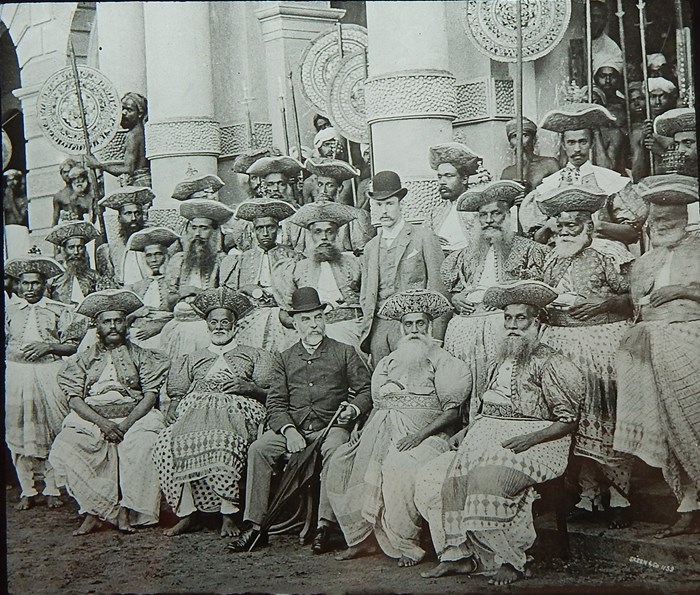
Above: Sir Everard im Thurn seated amongst a group of 'Kandyan Chiefs', circa 1901-1904. Bottom right corner: 'Skeen & Co. 1159'. Photographer unknown. From Im Thurn’s lantern slide collection, National Museums Scotland slide catalogue number 402.4.
The image above of Everard im Thurn seated in the centre of a group of men from the ruling elite in Kandy, Sri Lanka, is taken from one of the glass lantern slides that he donated to the Museum in 1932. The slides are a mixture of images taken by im Thurn himself, images from commercial studios, maps and illustrations from publications.
As the Lieutenant-Governor and Colonial Secretary in Sri Lanka, Everard and Hannah im Thurn would have worked and socialised with the Sri Lankan elite, as depicted in this image. The majority of the objects in their collection are items associated with status and wealth, for example finely crafted and elaborately decorated writing styles, knives, betel (areca nut) accessories such as lime boxes and cutters, ornamental hairpins, brooches and combs made of ivory and horn.
Im Thurn’s lantern slide collection from Sri Lanka illustrates how some of the objects were used. For example, one the image depicts a Sinhalese man wearing a comb at the back of his head, although he is dressed in a European suit. Sinhalese men, especially those living in the lowland coastal regions of Sri Lanka, traditionally grew their hair long, and then tied it up in a bun or konde, into which a decorative comb made of ivory, turtle or tortoise shell and horn was inserted as a symbol of high status. This practice declined under British colonial rule. Another depicts a man seated writing with a style on 'Ola' or palm leaves.
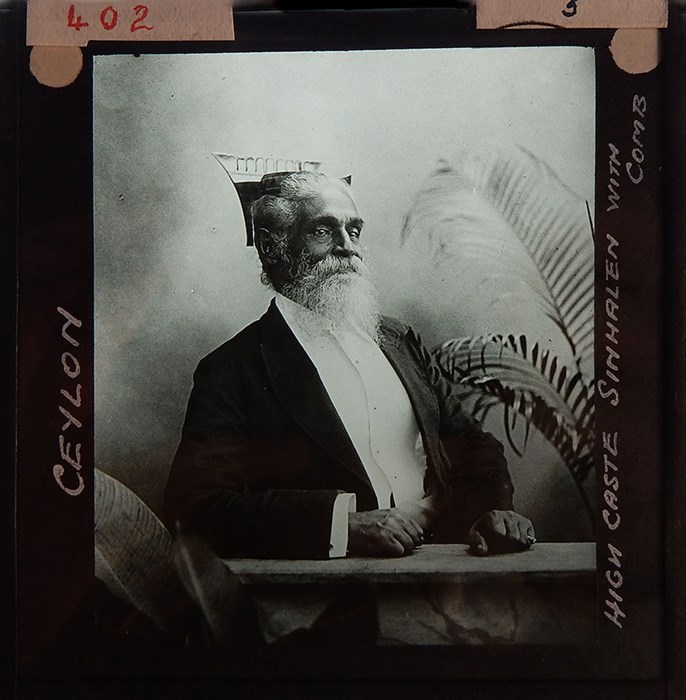
Above: Handwritten caption: 'Ceylon / High caste Sinhalen with comb'. Photographer unknown. From Im Thurn’s Lantern Slide collection, National Museums Scotland lantern slide catalogue number 402.5.
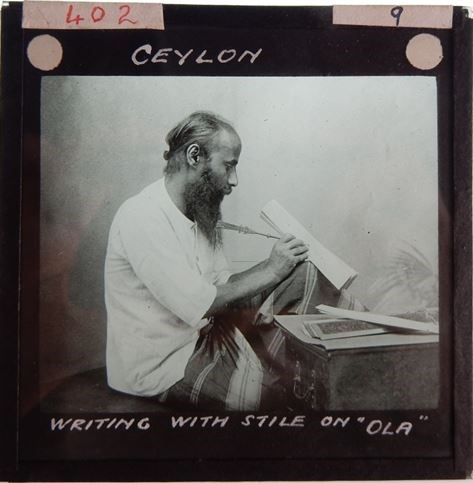
Above: Handwritten caption: 'Ceylon / Writing with stile on "Ola"''. Photographer unknown. From Im Thurn’s Lantern Slide collection, lantern slide catalogue number 402.9.
The lantern slides also document the reintroduction of the annual pearl fishery off the coast of Sri Lanka in 1903 after an interval of 11 years. As acting governor at the time, im Thurn was directly involved in the arrangements and oversaw the whole process, including valuation as pearls were one source of revenue from the Government. im Thurn wrote an account of the event, titled 'Sketch of Ceylon Pearl Fishery of 1903', which was published in Colombo Museum's journal Spolia Zeylanica. He describes the pearl merchants:
“all day long they sit on the ground, toying with pearls spread on the dark colored cloth […] on the cloth, too, is a delicately formed copper scoop, shell shaped, for lifting pearls, neat little scales with a quaint–shaped case to hold them and with weights, the larger of agate, the smaller of bright scarlet seeds, also a set of basket-shaped sieves for grading the pearls.- Im Thurn, E. 1903, reprinted 1934, p.190
An example of the brass scales used for weighing and valuing pearls, and the tin box they were contained in, as described by im Thurn, are also in the collection.
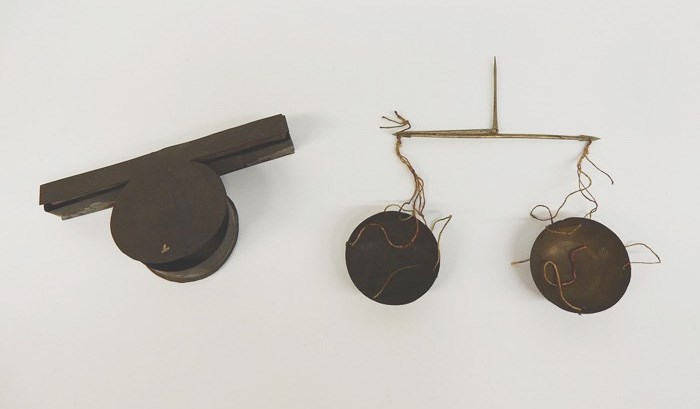
Above: Brass scales used for weighing and valuing pearls, and the tin box they were contained in (accession number A.1932.157 and A.1932.157A).
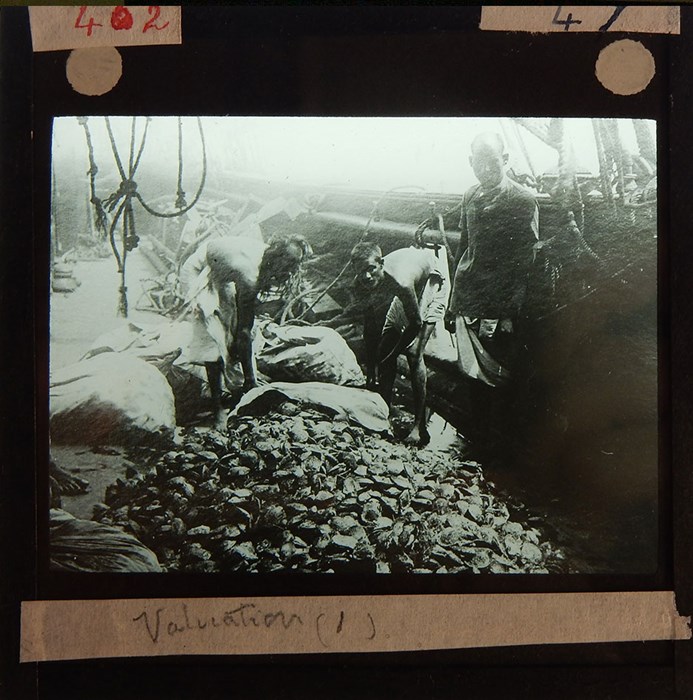
Above: Lantern slide captioned 'Valuation (1)' , c.1903. Photographer probably Sir Everard Im Thurn. Slide catalogue number 402.47.
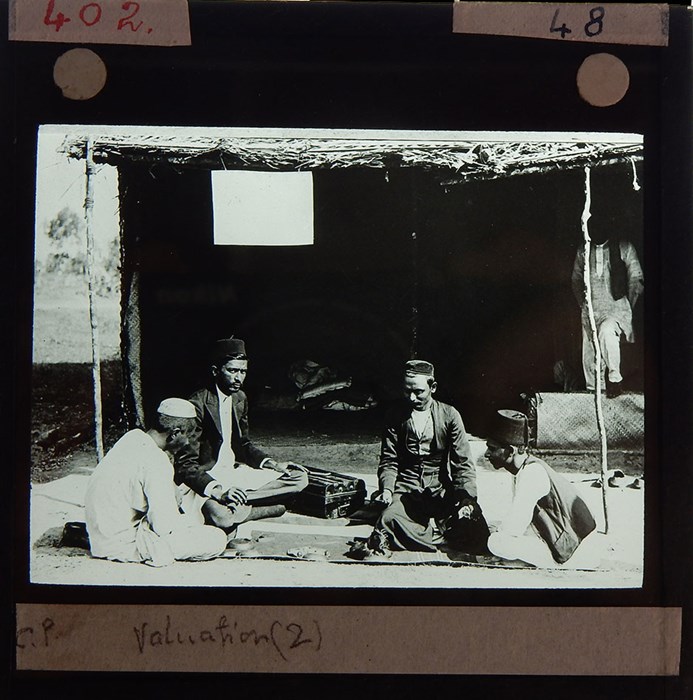
Above: Lantern slide captioned 'Valuation (2)' , c.1903. Photographer probably Sir Everard Im Thurn. Slide catalogue number 402.48.
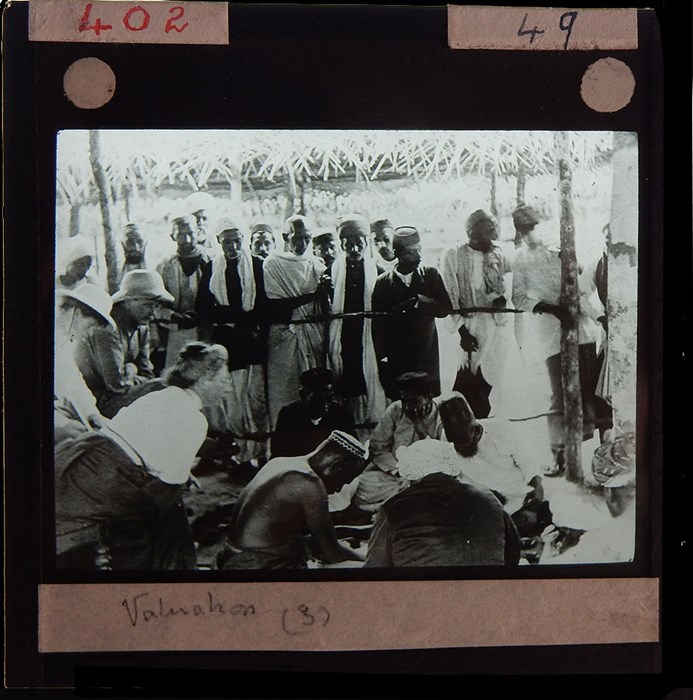
Above: Lantern slide captioned 'Valuation (3)' , c.1903. Photographer probably Sir Everard Im Thurn. Slide catalogue number 402.49.
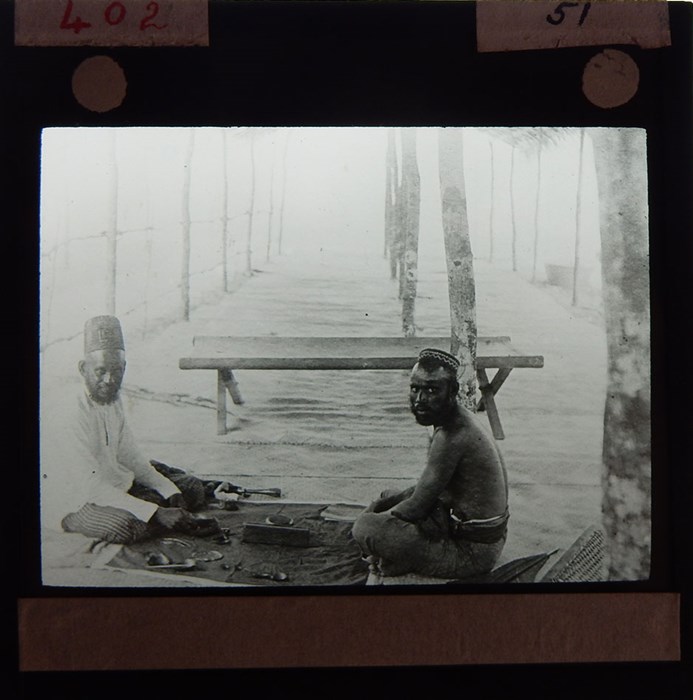
Above: Pearl valuation, c.1903. Photographer probably Sir Everard Im Thurn. Slide catalogue number 402.51.
Albuquerque, Sara. 2015. 'Flower of Aristolochia gigas var. sturtevantii used as a hat by a native of British Guiana a photograph from Everard im Thurn at the Royal Botanic Gardens, Kew' in the Archives of Natural History, 42(2), pp. 355-356.
Albuquerque, Sara. 2012. 'Watercolours of Orchids Native to British Guiana at the Royal Botanic Gardens, Kew, Attributed to Hannah Cassels Im Thurn (1854-1947)' in the Archives of Natural History 39, no. 2, pp. 344-47.
Chalmers, Esther B papers and letters, National Library of Scotland (Acc. 8695), including Correspondence by Lady Hannah im Thurn.
Cox, Amy. 2007. 'Purifying Bodies, Translating Race: The Lantern Slides of Sir Everard Im Thurn' in the History of Photography 31, no. 4, pp. 348-64.
Dalziell, Rosamund. 2002. 'The Curious Case of Sir Everard Im Thurn and Sir Arthur Conan Doyle: Exploration & the Imperial Adventure Novel, The Lost World' in English Literature in Transition 1880-1920 45, no. 2, pp. 131-157.
Dalziell, Rosamund. 2007. 'Everard Im Thurn in British Guiana and the Western Pacific' in Writing, Travel and Empire: In the Margins of Anthropology. Edited by Hulme, Peter and McDougall, Russell.
Im Thurn, Everard Ferdinand. 1883. Among the Indians of Guiana: Being Sketches Chiefly Anthropologic from the Interior of British Guiana. London: K. Paul, Trench.
Im Thurn, Everard Ferdinand. 1893. 'Anthropological Uses of the Camera,' in the Journal of Anthropological Institute, 22, pp. 184-203.
Im Thurn, Everard Ferdinand, and R. R. Marett. 1934. Thoughts, Talks and Tramps: A Collection of Papers. London: Oxford University Press.
Tayler, T. D. 1992. 'Very loveable human beings: the photography of Everard im Thurn' in Anthropology and photography 1860–1920. Edited by Edwards, E. New Haven, pp. 187–192
Header image: Sir Everard im Thurn seated amongst a group of 'Kandyan Chiefs', circa 1901-1904. Bottom right corner: 'Skeen & Co. 1159'. Photographer unknown. From Im Thurn’s lantern slide collection, slide catalogue number 402.4.